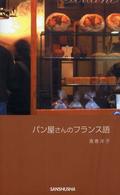Full Description
What are the elements of culturally responsive and sustaining instruction? How can these elements be implemented in classrooms?
One of the most effective methods of addressing these issues is the Culturally Responsive Instruction Observation Protocol (CRIOP), which is being used in school districts nationwide to guide teacher professional development. A Framework for Culturally Responsive Practices presents scholarship in second language acquisition, sociolinguistics, culturally appropriate assessment, educational anthropology, educational psychology, instruction, and critical pedagogy to provide guidance to those who strive to teach in ways that meet the needs of a diverse student population. The book is a culmination of the authors' many years of experience as both researchers and instructional coaches in schools, presenting a comprehensive portrait of the research and practices associated with culturally responsive teaching. Each chapter showcases a different element of the CRIOP, providing supporting research as well as ways to implement the element in K-8 classrooms. The book also includes several specific examples written by teachers in the field and a comprehensive bibliography. This is a practical guide that can be used in a variety of courses for pre-service teachers as well as by teachers and administrators in school districts across the country.
Perfect for courses such as: Teaching in a Diverse Society, Multicultural Education, Effective Teaching Practices in Elementary/Middle School, Cultural and Social Foundations of Education, Teaching Diverse Populations, Sociocultural Perspectives in Education, Educational Perspectives in a Global Society, Educational Inequality, Urban Studies
Contents
Introduction
Rebecca Powell and Susan Chambers Cantrell
Chapter 1
Classroom Relationships
Doris Walker-Dalhouse
Classroom Scenario 1.1 - Kindness Study
Melissa Collins and Aimee Gonzalez
Classroom Scenario 1.2 - Rare Bird
Taylor Cain
Chapter 2
It Takes a Village to Teach a Child: Family Collaboration as an Essential Component of Culturally Responsive Instruction
Kristen H. Perry
Classroom Scenario 2.1 - Creating a Collaborative Relationship With Families
Elisabeth Darce
Classroom Scenario 2.2 - Family Collaboration
Jill Robertson
Chapter 3
Assessment as the Bridge Between Culturally Responsive Teaching and Learning
Shannon O. Sampson and Carolyn A. Oldham
Classroom Scenario 3.1 - New Learning Experiences, From Instructional Practices to Assessment
Jennifer Caudill
Chapter 4
Culturally and Linguistically Responsive Instructional Practices
Susan Chambers Cantrell and Tiffany R. Wheeler
Classroom Scenario 4.1 - Connecting Geologic and Biologic History to Students' Lives
Brittany Manion
Classroom Scenario 4.2 - PWIM
Emily D. Banks
Chapter 5
Discourse and Culturally Responsive Instruction
Pamela Knuckles Correll
Classroom Scenario 5.1 - Implementing Accountable Talk in the Elementary Classroom
Ashley Mangum
Chapter 6
Critical Consciousness
Rebecca Powell and Victor Malo-Juvera
Classroom Scenario 6.1 - Blessing Bags
Anita Johnson
Classroom Scenario 6.2 - Plastic in the Ocean
Margot Schenning
Classroom Scenario 6.3 - Ghost Boys Reading Enrichment Unit
Kala Damron
Classroom Scenario 6.4 - Critical Consciousness
Annabeth Edens
About the Authors








